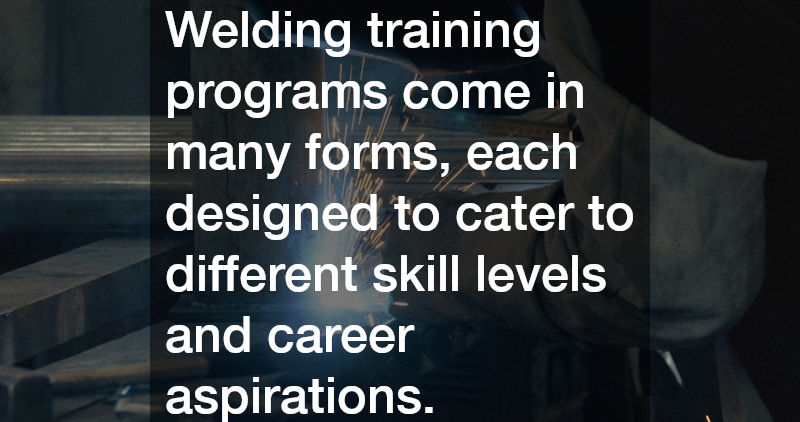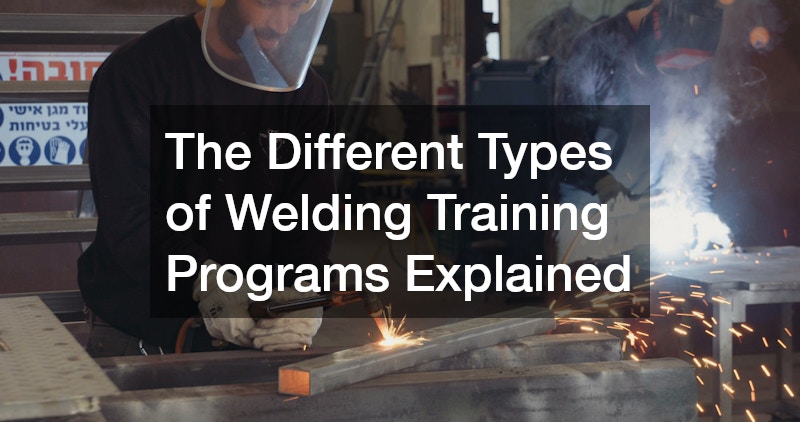The Different Types of Welding Training Programs Explained
Introduction
Welding is a critical skill in various industries, required in sectors ranging from construction to manufacturing, and even artistic endeavors. As the backbone of many infrastructural and industrial applications, effective welding training is essential for anyone looking to make a career in this field. This article will delve into the different types of welding training programs available, examining what they entail and how they cater to diverse learning needs.
What Types of Welding Programs Are Available?
Welding training programs come in many forms, each designed to cater to different skill levels and career aspirations. For beginners or those looking to gain basic proficiency, introductory courses offer hands-on training in fundamental welding techniques such as MIG (Metal Inert Gas), TIG (Tungsten Inert Gas), and stick welding.
These programs typically focus on safety protocols, basic welding processes, and the use of welding equipment. This foundational knowledge sets the stage for more advanced learning and specialization.
In addition to these foundational courses, there are vocational and technical school programs aimed at providing comprehensive training for those seeking to enter the workforce as certified welders. These programs go beyond basic welding techniques by covering more complex processes, such as flux-cored arc welding and pipe welding. Students learn to read blueprints, understand metallurgy, and develop skills in welding inspection and quality control.
For those looking to advance their careers or specialize in a specific field, advanced certifications and associate degree programs are available. These programs offer in-depth knowledge in areas like underwater welding, robotic welding, and welding for specific industries such as aerospace or automotive. By completing these advanced programs, welders can position themselves for higher-level positions and increased earning potential, as well as fulfilling the need for skilled professionals in niche market segments.
How Long Does It Take to Complete Welding Training?
The duration of welding training programs varies depending on the type of certification or degree a student is pursuing. For basic or introductory welding courses, students can often complete their training within a matter of weeks, enabling them to quickly gain the skills necessary for entry-level positions. These short-term courses are ideal for individuals seeking immediate employment or those who wish to acquire specific welding skills needed for particular projects.
Vocational and technical school welding programs, on the other hand, typically span several months to a year. These programs offer a more comprehensive education, blending classroom instruction with hands-on training. The extended duration ensures that students become proficient in various welding techniques and are well-prepared to enter the workforce as skilled welders, meeting the industry’s demand for qualified professionals.
Advanced welding programs, including associate degrees or specialized certifications, may take anywhere from one to two years to complete. These programs provide an in-depth exploration of welding practices and often include internships or cooperative education opportunities, allowing students to gain practical experience in real-world settings. As a result, graduates of these programs are highly sought after for their expertise and readiness to tackle complex welding tasks.
What Are the Costs Associated with Welding Training?
The costs of welding training programs can vary widely based on the program’s type, length, and institution. Introductory courses or short-term training programs typically have lower tuition fees, making them an affordable option for individuals looking to acquire basic welding skills. These programs may also offer flexible payment options or financial aid opportunities to ease the burden on students.
Vocational and technical school programs, while more expensive than basic courses, provide a comprehensive education that may justify the higher costs. Tuition for these programs can range from a few thousand dollars to upward of $10,000, depending on the institution and the length of the program. However, students often find that the investment pays off, as the skills gained enable them to secure stable and well-paying jobs in the welding industry.
For those pursuing advanced certifications or associate degrees in welding, costs can be significantly higher, reaching tens of thousands of dollars. These programs, offered by community colleges or specialized technical institutions, often require a more substantial financial commitment. However, the in-depth training and specialization provided by these programs can lead to lucrative career opportunities and advancements, ultimately making them a sound long-term investment in one’s professional future.
Conclusion
Understanding the various types of welding training programs is essential for choosing the right path to begin or advance a career in welding. With options ranging from basic courses to advanced degree programs, individuals can find training that aligns with their current skill levels and future aspirations. By considering the program types, duration, and costs, people can make informed decisions that match their professional goals and personal circumstances.

